NES Classic Edition review: The best and worst of retro gaming
Nostalgia in a nutshell.

"I don't want to sit on the floor while I play video games," my buddy Josh told me. "I'm not 7 anymore." My friend was parked just 4 feet away from my 40-inch television, playing Ninja Gaiden on the NES Classic Edition -- a tiny re-creation of Nintendo's original home game console. The diminutive game system has everything a nostalgic gamer could want: an iconic design, a built-in collection of 30 classic games and pixel-perfect emulation. But for Josh, the two-and-a-half-foot-long controller cables were a deal-breaker. It's a shame, too: Almost everything else about the NES Classic is perfect.
In a lot of ways, the Classic is a product that feels long overdue, if only because Nintendo's longtime rivals have been selling officially licensed plug-and-play consoles for over a decade. These devices were relatively cheap and usually came with a robust selection of each console's most popular games. They also had a reputation for bad sound emulation, antiquated video-output technology and poor build quality. Nintendo's take on the mini-console is late to the party, but at least it's fashionably late: Not only does the NES Classic offer a hearty collection of the original console's most popular games, it delivers them to your television in crisp, high-definition resolution over HDMI.
Just as you remember it, but smaller
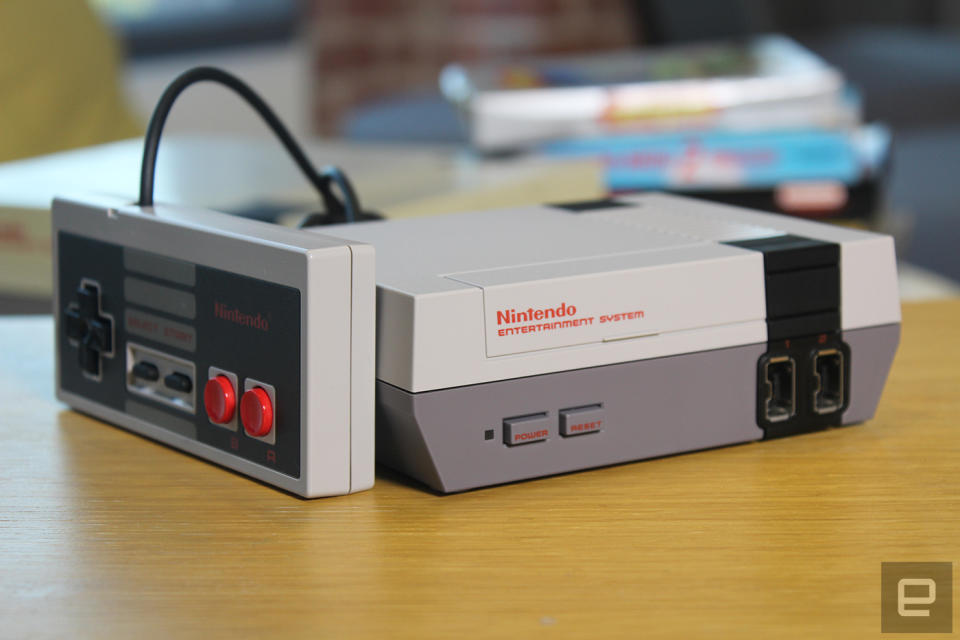
If you've seen the original Nintendo Entertainment System, you've basically seen the NES Classic Edition. The mini-console looks almost exactly like the gray and black box Nintendo released three decades ago, albeit at a much smaller scale. The NES Classic is, in a word, tiny -- it barely stretches beyond than the length of its own gamepad at its widest point, but it's still faithful to the device that inspired it. The same horizontal grooves reach across the top of the console's chassis, leading down to a pair of controller ports that are exactly where you remember them to be. To the left, you'll find a familiar red LED, as well as power and reset buttons that look identical to their progenitors. Around the back are two more connections: a micro-USB port for power, and HDMI output.
At first blush, the Classic is a dead ringer for the original, but the modernization of the NES has wrought a few minor cosmetic changes. Instead of using the original NES's controller ports, the new console has opted for Wii Remote accessory connectors. These ports are compatible with Wii Classic Controllers and a slew of third-party accessories (more on that later), but their width cuts into the "gray" area of the NES Classic front more than the original console's controller ports did.
Despite having a perfectly molded re-creation of the original console's cartridge slot, the Classic's chamber lid door is purely cosmetic -- it doesn't open. Even so, the vestigial door lends itself to the nostalgic experience. It's the details that make the NES Classic a joy to hold and play with. Even the power button feels just like the original, depressing with a deep, springy tactility that clearly defines where the "on" position is.
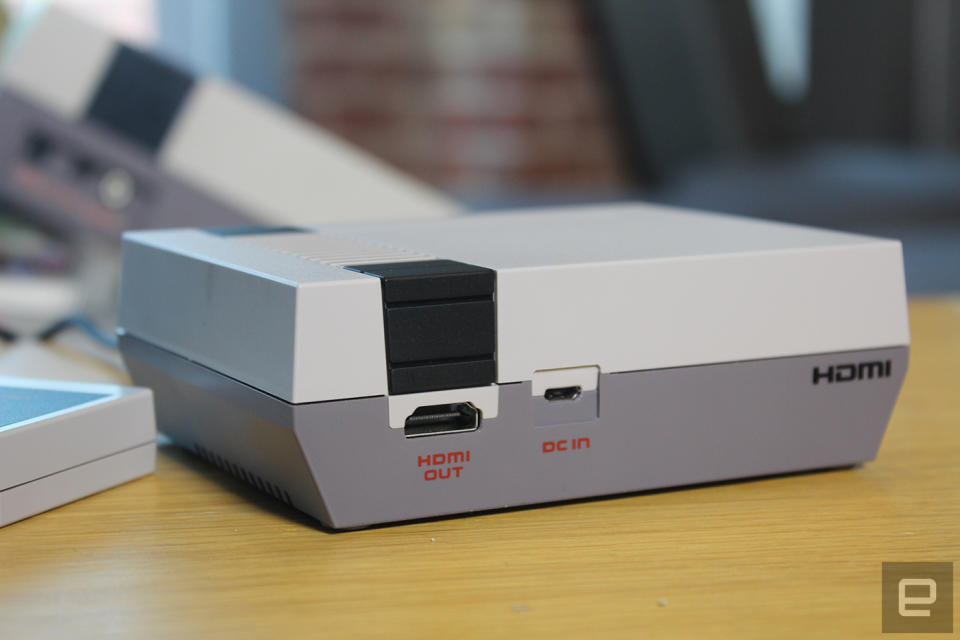
It doesn't take long before you can press that power button, either -- setting up the NES Classic Edition is as easy as plugging a power cable into your TV's spare USB port (or the included wall adapter) and hooking up an HDMI cable. That's it.
Gaming like it's 1985 (but better)
Nintendo's diminutive retro console boots up in less than five seconds and presents users with what might be the most straightforward, easy-to-use menu the company has ever created. Save for a few bells and whistles, the NES Classic Edition's menu is little more than a horizontal scrolling list of 30 of the system's most revered titles -- an alphabetical smorgasbord (see the full list below) that runs from Balloon Fight to Zelda II: Adventure of Link. Pressing select will sort the list by publisher, title, multiplayer, recently played, times played and release date, but there's not really enough games on the list that it needs sorting options. Simply scroll left or right until you find something you like, and press start.
The NES Classic Edition game library | |||||
Balloon Fight | Bubble Bobble | Castlevania | Castlevania II: Simon's Quest | Donkey Kong | Donkey Kong Jr. |
Double Dragon II: The Revenge | Dr. Mario | Excitebike | Final Fantasy | Galaga | Ghosts and Goblins |
Gradius | Ice Climber | Kid Icarus | Kirby's Adventure | Mario Bros. | Mega Man 2 |
Metroid | Ninja Gaiden | Pac-Man | Punch-Out!! Featuring Mr. Dream | StarTropics | Super C |
Super Mario Bros. | Super Mario Bros. 2 | Super Mario Bros. 3 | Techmo Bowl | The Legend of Zelda | Zelda II: The Adventure of Link |
Playing classic Nintendo games on the mini-console is almost like having a revelation -- if you've only ever played NES games on official hardware, you've never seen them look this good. Complex pixel patterns and shading that would traditionally be obscured by the blurry glow of a CRT television simply pop with detail over the Classic's HDMI connection. Colors that once blurred together are now distinct, pulling out details like the whites behind Megaman's eyes, or the expression on a zombie's face in Castlevania. The Classic outperforms the Wii, Wii U and even the original NES in terms of visual quality. It's about time, too: Nintendo has been offering classic NES games on its Virtual Console service for a decade, and until now they've always looked terrible.
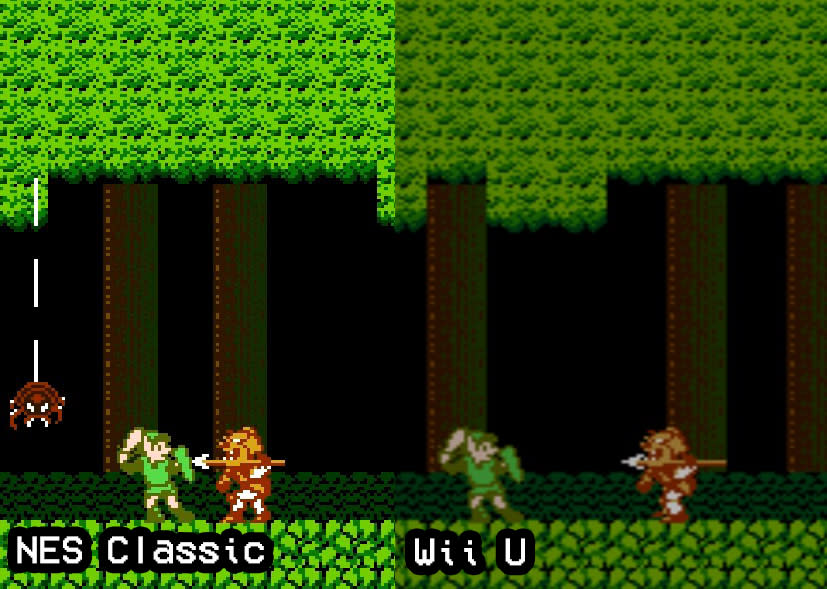
It's true. For some reason, Virtual Console games on the Wii and Wii U suffer from muted colors, dim contrast and a gross, blurry overlay. It's a problem classic Nintendo fans have been aware of for years: NES games simply look better on PC emulators and third-party consoles like the Retron5 and RetroUSB AVS. The NES Classic finally closes that gap, offering an official solution for playing classic Nintendo games that can compete with the best efforts of unofficial (and sometimes legally questionable) competitors.
More important, the Classic's high-quality emulation shows that Nintendo is finally getting serious about its digital archive of old games -- if its cheap plug-and-play game console looks this good, maybe Virtual Console games on the Nintendo Switch won't look half bad, either.
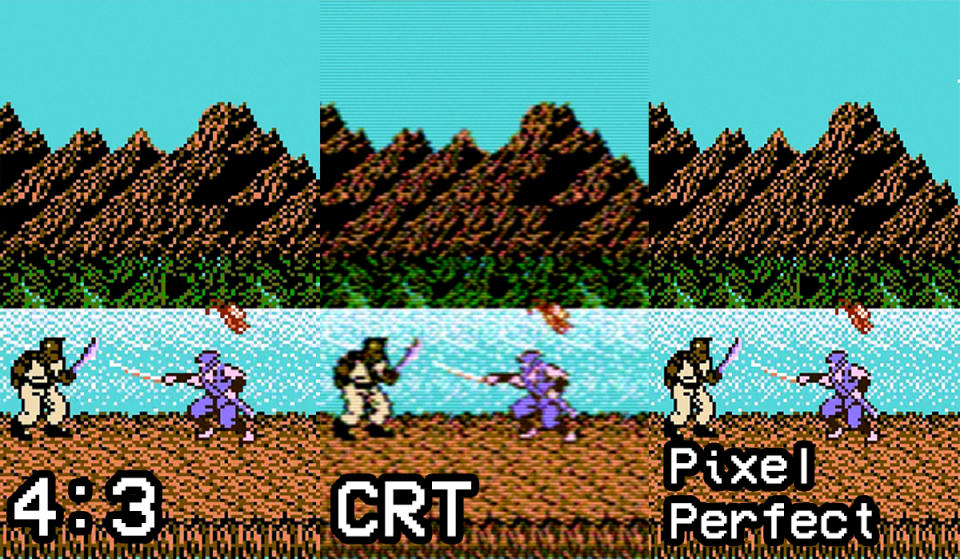
If crystal-clear pixels aren't your thing, the Classic can accommodate. Pressing the "reset" button returns you to the main menu, where you can select from three different display modes: a "pixel perfect" setting that draws games at their native resolution; a wider, but still sharp, 4:3 presentation; or a robust CRT filter designed to simulate the blur and scanlines of an old television set. These are all pretty standard filter modes in the retro-gaming scene, but the NES Classic's CRT mode is particularly impressive -- most emulators are content with overlaying a dim layer of scanlines and calling it a day, but the Classic's subtle blurring and pixel-distortion effects really sell the illusion. Technically, this feature makes every game look "worse" -- but worse in a way that looks, well, sort of right.
Even more nostalgia can be found in the menu's manual section -- well, sort of. The game-manual icon doesn't actually call up a list of video-game instruction booklets so much as it displays a QR code and URL that will take you to them. It feels a bit like a cop-out, but following the link is worth it. Not only does Nintendo's NES manual website feature full digital manuals, but it also has high-resolution scans of the original printed booklets that came with each game. They're pretty complete, too: The scanned manuals for Final Fantasy and The Legend of Zelda include original artwork and huge maps of each game's overworld. It's just a shame this content isn't also built directly into the system. Some games, like Startropics, can't be finished without special hints that were included in the game manual. Forcing players to access the web to beat a 30-year-old video game is a little weird.
The NES Classic's menu has one more special feature, and it's an important one: Suspend Points. Think of it like a bookmark feature -- Suspend Points (or "save states," as they're commonly known) allow you to pause the game at any moment and save it for later. This can be used to add save functionality to games like Metroid and Ghosts and Goblins, or to allow you replay a challenging part of a game over and over until you get it right. It's sort of like cheating, but it's worth it: Some of these old games are really hard.
The fatal flaw
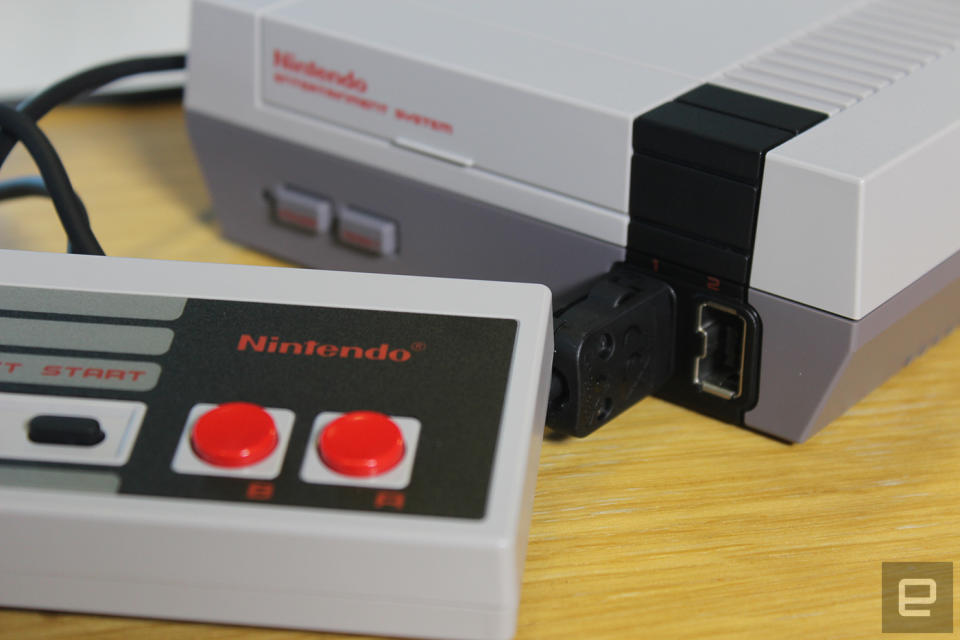
The NES Classic is almost perfect, but there's a reason this review started with one of my oldest friends sitting on my floor, groaning. Josh and I (remember Josh?) marveled at the attention to detail in the Classic's chassis as we hooked it up to my HDTV. We geeked out over its controller -- a dead ringer for the square gamepad that shipped with the original Nintendo Entertainment System. We were, frankly, beside ourselves with the product -- until we noticed the NES Classic controller's cable. At just 2.5 feet long, it was too short to reach the couch.
Josh stared at me in disbelief. "This is ridiculous," he told me. He's right. The NES Classic makes 8-bit Nintendo games look gorgeous on modern televisions, but its controller cables are too short to allow players to enjoy them from a comfortable distance. Maybe, we mused, it's part of the retro experience: the truncated wiring forced us to sit cross-legged on the floor, just like we did when we were kids -- but we weren't comfortable, and were too close to the 40-inch television to really take-in the whole screen.
As we played, the short cable seemed to be a compromise between inconvenience and historical accuracy. Because the NES Classic's controller is an almost exact reproduction of the original NES gamepad, it lacks a home button to call up the menu. This means the player needs to be within an arm's reach of the console's "reset" button at all times. If the controller had a longer cable, we would have had to stand up and walk across the room every time we wanted to load a Suspend Point, change the screen setting or switch to a new game. That's equally ridiculous.
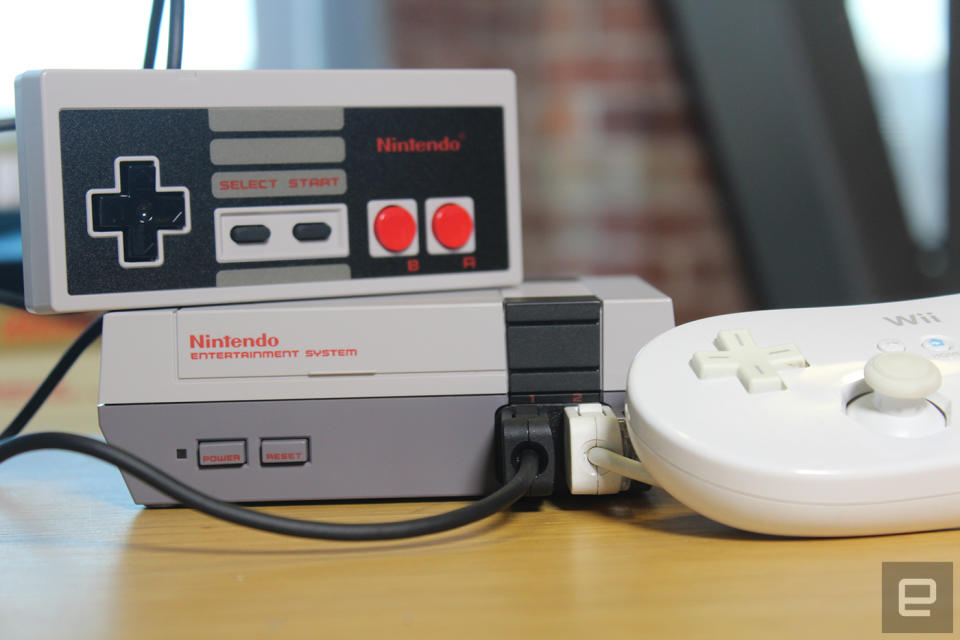
Without a doubt, this is the NES Classic Edition's greatest flaw -- but what makes it worse is how entirely avoidable it was. The mini-console's controller uses the exact same connector as the Wii Remote accessory port, which means it supports the Nintendo Wii Classic controller. That gamepad actually has an even shorter cable, but that's not the point: The Classic controller has a home button, and that home button works on the mini NES. By choosing not to add a home button (and a longer cable) to the NES Classic Edition gamepad, it made the entire experience bad enough to spoil the system for a lifelong Nintendo fan. "I really want this thing," Josh told me. "But, man, that controller cable."
Adamant fans can close the gap with cable extenders and third-party controllers, but for Josh, it was just too much. At $60, the NES Classic offered a great value. At $60 plus the price of a bunch of accessories to make it easy to play in his apartment, the NES Classic was suddenly kind of a pain in the ass.
Wrap-up
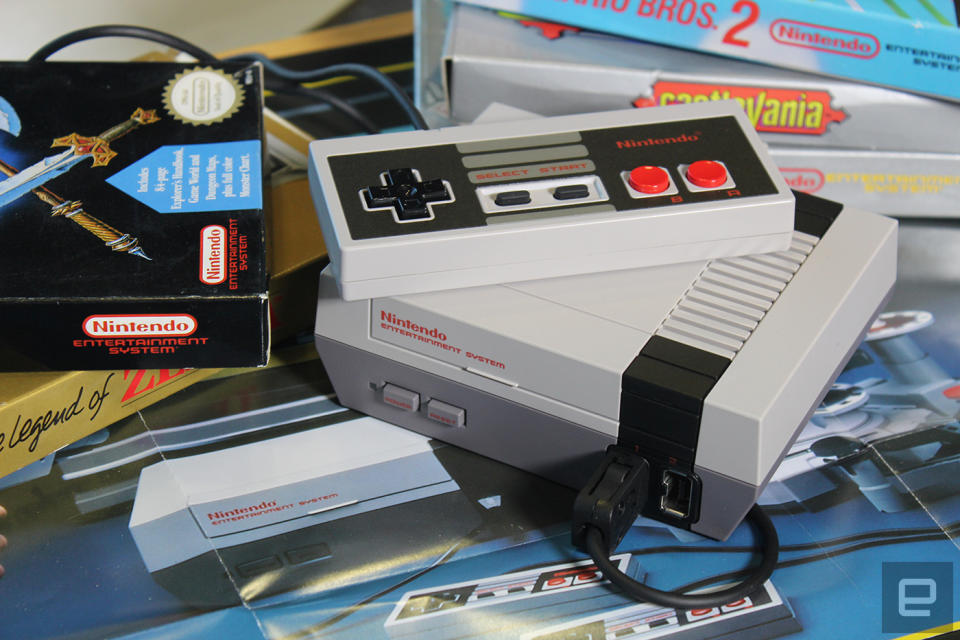
The NES Classic Edition is everything it promised to be -- it's a tiny version of Nintendo's most iconic home video-game system, complete with 30 fantastic games, excellent emulation and more than enough nostalgia to satisfy any adult who grew up in the '80s and '90s. Even so, it's not perfect. Frustratingly short controller cables make it hard to use comfortably in a modern living space, and its nonexpandable library means that you're stuck with the collection of games it comes with. If your favorite NES game isn't already on the console, you're out of luck.
If you can deal with those issues, however, the Classic is an incredible value -- and a great gift for the 30-something geek in your life.












